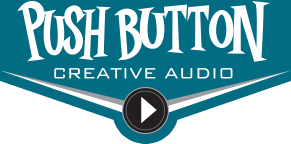
The Golden Age of Radio can still teach us a lesson or two.
On October 30, 1938, Orson Welles directed and starred in a radio adaptation of the H.G. Wells novel “War of the Worlds” – an episode of the Mercury Theater on the Air that was meant to coincide with Halloween. It is now considered by many to be the most famous radio broadcast in history.
Radio shows back then regularly featured comedy acts, music and dramas, but this show was unusual in that it presented a drama in the form of a fictional newscast interrupting “regularly scheduled programming.” With great voice acting, sound effects and simulated “live connections” to the supposed scene of devastating events, the broadcast presented a realistic and compelling tale of an alien invasion of Earth.
As it turned out, it was so realistic and compelling that many people – apparently more than a million – believed it was actually happening.
A little background…
Network radio was still relatively new in 1938, but it had quickly become a primary source of news and entertainment (television didn’t begin to impact the average American home until later – even by 1947 there were still only about 44,000 televisions in the U.S.). It was common for families to gather around the radio after dinner to enjoy their favorite evening show. On that October night in 1938, it is estimated that 40 million people were listening to the radio (the total U.S. population at that time was 130 million). About 6 million tuned in to the broadcast of “War of the Worlds.”
As the drama unfolded, many listeners either heard only a portion of it or somehow missed the repeated notices that the broadcast was fictional. Actors gave detailed accounts of Martians attacking with heat rays and state militias being quickly overwhelmed. Other actors broke into the drama with casualty and damage reports. It was such an authentic simulation of a real disaster that people began calling friends and neighbors to find out what was happening. As other distraught listeners attempted to call police and fire stations, telephone circuits were soon overwhelmed. People took shelter in basements or jumped into their cars to flee in panic. According to the New York Times, “…families rushed out of their houses with wet towels over their faces as protection from Martian poison gas.”
Eventually, as crowds roamed around and found no actual damage, and, presumably, no alien space ships, the hysteria subsided. In some areas, it took several days.
By now, you’re probably asking yourself, “Self, this is fascinating, but what does it have to do with me?”
This is a reminder that radio was, and still is, a very important tool. If well-planned and well-executed creative audio can convince people that Martians are invading, imagine what it can do for your business. We’re certainly not encouraging you to produce commercials that will cause people to panic, but good radio advertising can put the power of imagination to work for you. Whether you’re using broadcast radio or streaming services like Pandora, radio, unlike television or print, doesn’t deliver ready-made images to the consumer’s eye. It prompts listeners to create their own images in their mind’s eye, and those images are often the most convincing of all.
Curious about the original broadcast of “War of the Worlds?”
You can find it here.







